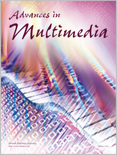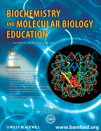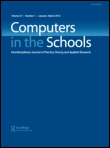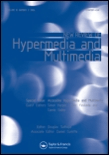
Advances in Multimedia
Scope & Guideline
Connecting Scholars to the Multimedia Revolution
Introduction
Aims and Scopes
- Multimedia Processing Techniques:
Research on advanced algorithms and methodologies for processing multimedia data, including image, audio, and video processing. This encompasses areas such as image enhancement, compression, and real-time processing. - Artificial Intelligence and Machine Learning in Multimedia:
Exploration of how AI and machine learning technologies can be applied to improve multimedia systems, including applications in image recognition, natural language processing, and intelligent recommendation systems. - Educational Multimedia Applications:
Development and analysis of multimedia tools and strategies for enhancing educational practices, particularly in language learning, music education, and interactive teaching methodologies. - Big Data and Multimedia Fusion:
Investigations into the integration of big data analytics with multimedia technologies to enhance data-driven decision-making in various sectors, including education, healthcare, and logistics. - Network and Security in Multimedia Systems:
Studies focused on the security and privacy aspects of multimedia systems, including encryption techniques and secure data transmission methods. - Multimedia in Smart Environments:
Research on the application of multimedia technologies in smart cities, IoT environments, and other innovative frameworks that leverage multimedia for enhanced user interaction and experience.
Trending and Emerging
- Generative Adversarial Networks (GANs) and Deep Learning:
The application of GANs and deep learning techniques is on the rise, particularly in areas such as image synthesis, enhancement, and creative content generation, demonstrating their potential in multimedia innovations. - Multimodal Data Analysis and Integration:
Research focusing on the integration of various data modalities (text, image, audio, etc.) is gaining traction, emphasizing the need for comprehensive systems that can analyze and interpret complex data sets. - Real-Time Multimedia Processing:
With advancements in technology, there is an increasing focus on real-time processing capabilities in multimedia applications, particularly for video streaming, surveillance, and interactive systems. - Augmented Reality (AR) and Virtual Reality (VR) Applications:
The use of AR and VR technologies in education and training is emerging as a significant area of research, highlighting their effectiveness in creating immersive learning experiences. - Privacy and Security in Multimedia Systems:
As concerns over data privacy grow, research into secure multimedia systems, including encryption and secure data sharing, is becoming increasingly relevant and necessary.
Declining or Waning
- Traditional Multimedia Teaching Methods:
There has been a noticeable decline in research focused solely on traditional multimedia teaching methods, as the field shifts towards more innovative, technology-driven approaches that leverage AI and interactive technologies. - Static Multimedia Content Analysis:
Research that emphasizes static analysis of multimedia content without interactive or dynamic components is waning, as the focus moves towards dynamic, real-time applications and user engagement. - Basic Data Processing Techniques:
Fundamental techniques for multimedia data processing are becoming less common as the field evolves towards more complex, integrated solutions that incorporate machine learning and AI methodologies. - Low-Level Image Processing:
As advancements in high-level processing techniques emerge, interest in low-level image processing methods has decreased, with researchers focusing more on applications that utilize advanced algorithms and AI. - Traditional Multimedia Archiving Techniques:
The exploration of conventional multimedia archiving techniques is declining, overshadowed by the growing significance of big data analytics and cloud-based storage solutions.
Similar Journals

Journal of Technology and Chinese Language Teaching
Empowering Language Learning Through TechnologyJournal of Technology and Chinese Language Teaching, published by JOURNAL TECHNOLOGY & CHINESE LANGUAGE TEACHING, serves as an influential platform for scholars and practitioners in the intersecting fields of technology, language education, and linguistic research. With an ISSN of 1949-260X, this journal strives to disseminate cutting-edge research and innovative practices aimed at enhancing the teaching and learning of Chinese language through technological advancements. Operated from the United States, it currently occupies valuable quartiles within its categories, showcasing its significance—ranking Q4 in Computer Science Applications, Q3 in Education, and Q2 in Linguistics and Language. As it spans from 2019 to 2024, the journal provides a rich repository for international contributions, fostering a collaborative environment for educators, researchers, and students alike. With both Scopus and HIndex metrics reflecting a solid reputation, the Journal of Technology and Chinese Language Teaching is pivotal for those keen on pushing the boundaries of language instruction in the digital age.

MULTIMEDIA TOOLS AND APPLICATIONS
Fostering collaboration in the evolving landscape of media technology.MULTIMEDIA TOOLS AND APPLICATIONS, published by Springer, is a highly regarded journal in the fields of Computer Networks and Communications, Hardware and Architecture, Media Technology, and Software. Since its inception in 1995, this journal has established itself as a vital platform for disseminating innovative research and developments, maintaining a prominent position evidenced by its Q2 and Q1 rankings across various categories as of 2023. With an ISSN of 1380-7501 and an E-ISSN of 1573-7721, it continues to attract high-quality contributions from scholars and practitioners worldwide. Although it does not currently offer Open Access options, its impact is reflected in impressive Scopus rankings, placing it in the top quartiles in multiple categories, including a remarkable 10th rank in Media Technology. As the field evolves rapidly, the journal’s objectives encompass advancing multimedia technologies and exploring their multifaceted applications, making it an essential resource for researchers, professionals, and students seeking to stay at the forefront of this dynamic discipline. For more information, visit the journal's page to explore recent publications and submission guidelines.

BIOCHEMISTRY AND MOLECULAR BIOLOGY EDUCATION
Bridging knowledge gaps in molecular sciences.BIOCHEMISTRY AND MOLECULAR BIOLOGY EDUCATION is an essential publication in the field of biochemistry and molecular biology, published by Wiley. With an ISSN of 1470-8175 and E-ISSN 1539-3429, this journal has become a valuable resource for educators, researchers, and students alike since its inception in 1990. Covering a wide range of topics within biochemistry and molecular biology, it aims to foster an understanding of these complex disciplines through innovative educational practices and research findings. The journal, recognized for its contributions to pedagogy in the sciences, currently holds rankings in the Q3 quartile for biochemistry and Q4 for molecular biology according to the 2023 category quartiles. With open access options available, BIOCHEMISTRY AND MOLECULAR BIOLOGY EDUCATION strives to enhance accessibility to crucial educational materials and findings, making it an indispensable tool for advancing knowledge in these dynamic fields. For those aiming to remain at the forefront of biochemistry and molecular biology education, this journal is a must-read.

International Journal of Semantic Computing
Transforming Knowledge Through Semantic InnovationThe International Journal of Semantic Computing is a premier scholarly publication focused on the intersection of artificial intelligence, computer networks, and linguistics, published by World Scientific Publishing Co PTE Ltd. Since its inception in 2007, this journal has strived to advance the field of semantic computing by promoting innovative research and interdisciplinary collaboration among professionals and academics. With a diverse scope that spans across various categories including Artificial Intelligence, Information Systems, and Linguistics, it boasts commendable rankings, particularly in the fields of Linguistics (77th Percentile) and Linguistics and Language (Rank #259/1167). The journal caters to a broad audience by offering critical insights and cutting-edge studies, thereby contributing significantly to knowledge enhancement in semantic technologies and computational linguistics. Although it does not offer open access options, its rigorous peer-review process ensures the publication of high-quality research that is invaluable for both researchers and students seeking to deepen their understanding in these rapidly evolving areas.

COMPUTERS IN THE SCHOOLS
Shaping the landscape of technology in schools.COMPUTERS IN THE SCHOOLS, published by ROUTLEDGE JOURNALS, TAYLOR & FRANCIS LTD, is a pivotal scholarly journal dedicated to exploring the intersection of technology and education. With an impressive publishing history dating back to 1984 and ongoing contributions until 2024, this journal provides a comprehensive platform for researchers and educators to disseminate innovative ideas and practices related to the use of computers in educational settings. Although the journal does not currently offer Open Access options, it maintains an esteemed position in the academic community, evidenced by its Q2 ranking across multiple categories including Computer Science, Education, and Library and Information Sciences in 2023. It is particularly valued for its rigorous peer-review process which ensures high-quality contributions. With its ISSN of 0738-0569, COMPUTERS IN THE SCHOOLS serves as an essential resource for advancing knowledge, fostering best practices, and influencing policy in the integration of technology into schools, making it indispensable for educators, researchers, and practitioners striving to enhance learning experiences through innovative technological approaches.

New Review of Hypermedia and Multimedia
Navigating the Evolving World of MultimediaThe New Review of Hypermedia and Multimedia, published by Taylor & Francis Ltd, serves as a vital platform for scholars and practitioners in the dynamic fields of computer science, media technology, and information systems. Established in 1995 and continuing through 2024, this journal explores the interplay of hypermedia and multimedia within digital environments. With an ISSN of 1361-4568 and an E-ISSN of 1740-7842, it has achieved noteworthy rankings, including a Q3 classification in Computer Science Applications and Information Systems, and a Q2 classification in Media Technology as of 2023. Additionally, it ranks 19th in Engineering Media Technology with a remarkable 70th percentile. While the journal maintains a subscription model, it performs a critical role in disseminating cutting-edge research and fostering innovation among researchers, professionals, and students alike. Aimed at enhancing understanding and application of hypermedia and multimedia technologies, this journal is an indispensable resource for those at the forefront of these evolving disciplines.

International Journal of Multimedia Data Engineering & Management
Exploring the Frontiers of Multimedia Data InnovationInternational Journal of Multimedia Data Engineering & Management, published by IGI Global, is a pivotal platform for the dissemination of knowledge in the fields of multimedia data engineering, information management, and technology-driven methodologies. With a keen emphasis on exploring innovative approaches to data management, this journal engages researchers, professionals, and students interested in the rapidly evolving digital landscape. Although currently not designated as Open Access, the journal is accessible through institutional subscriptions, fostering rigorous academic dialogue and collaboration. The ISSN for this esteemed publication is 1947-8534 (E-ISSN: 1947-8542), ensuring its global reach and recognition within the scholarly community. By bridging theoretical perspectives with practical applications, the International Journal of Multimedia Data Engineering & Management supports ongoing advancements and drives impactful research in multimedia technologies.

ACM Transactions on Multimedia Computing Communications and Applications
Unveiling Breakthroughs in Communication and Applications.ACM Transactions on Multimedia Computing, Communications, and Applications is a premier journal published by the Association for Computing Machinery (ACM), pivotal in the field of Computer Networks and Communications and Hardware and Architecture. With an impressive 2023 impact factor, this journal holds a commendable Q1 ranking in both its categories, solidifying its significance within the research community. The journal welcomes high-quality research that explores innovative technologies and methodologies in multimedia computing and communication as well as applications that enhance user experiences. While it remains a subscription-based journal, it provides unparalleled access to groundbreaking studies, serving as an essential resource for researchers, professionals, and students seeking to stay at the forefront of multimedia technologies. Spanning from 2005 to 2024, the journal offers a rich repository of knowledge and is committed to fostering advancements in the multimedia domain.

MULTIMEDIA SYSTEMS
Fostering Insights in Multimedia ApplicationsMULTIMEDIA SYSTEMS, published by SPRINGER, is a premier academic journal dedicated to the dynamic field of multimedia technology and its applications across various domains. With the ISSN 0942-4962 and E-ISSN 1432-1882, this journal has established itself as an essential resource since its inception in 1993, providing researchers and professionals with rigorous peer-reviewed articles that explore innovative developments in Media Technology, Computer Networks, Hardware Architecture, Information Systems, and Software. As a testament to its academic impact, MULTIMEDIA SYSTEMS has attained a Q2 ranking in multiple key categories for 2023, alongside a notable Q1 ranking in Media Technology, highlighting its significance within the community. With a rich repository of knowledge and ongoing commitment to advancing multimedia research, this journal is an invaluable asset for those seeking to stay informed about cutting-edge technologies and methodologies. While the journal follows a traditional subscription model and is not presently open access, it ensures high-quality content that serves the scholarly needs of its audience, facilitated by its accessibility from Germany's respected academic infrastructures. For inquiries and submissions, the journal is based in New York, NY, further illustrating its global academic reach.

International Arab Journal of Information Technology
Advancing Knowledge in Information TechnologyWelcome to the International Arab Journal of Information Technology, a prestigious publication under the aegis of ZARKA PRIVATE UNIVERSITY in Jordan, dedicated to advancing the field of Information Technology. First established in 2008, this journal has made significant strides in disseminating high-quality research, achieving an impressive Q2 ranking in Computer Science (miscellaneous) and securing a notable 57th percentile position in the Scopus rankings. With a comprehensive scope encompassing various sub-disciplines of computer science, the journal is committed to promoting scholarly dialogue and innovation among researchers, professionals, and students. While currently operating as a subscription-only journal, it remains a vital resource for the academic community seeking to explore the latest trends and advancements in technology. The International Arab Journal of Information Technology is not only a platform for original research but also a vibrant hub for ideas that shape the technological landscape of the Arab region and beyond.